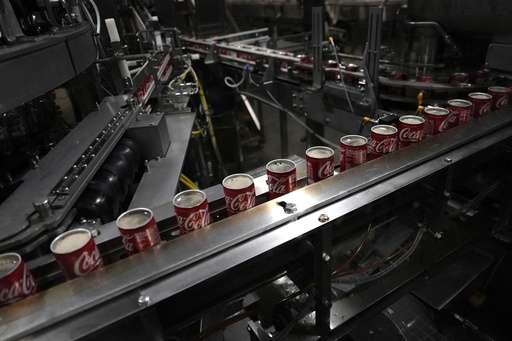In the United States, wholesale prices experienced a notable increase last month, indicating that inflationary pressures still exist in the economy, although these pressures have diminished compared to the peak observed over two years ago.
The Labor Department disclosed on Thursday that the producer price index (PPI), which measures inflation before it affects consumers, rose by 0.4% in November from the previous month, surpassing the 0.3% increase recorded in October. When assessed over a year, the wholesale prices saw a 3% increase in November, marking the most significant year-over-year rise since February 2023.
When excluding the more volatile food and energy sectors, the core producer prices increased by 0.2% from October and 3.4% compared to November 2022. This rise was primarily influenced by escalating food prices, which contributed to a higher-than-anticipated wholesale inflation figure. Notably, prices for fruits, vegetables, and eggs surged, leading to a 3.1% rise in wholesale food costs from October, following a month of stability.
This report on wholesale prices was released a day after the government announced that consumer prices rose by 2.7% in November compared to the previous year, which is an increase from the 2.6% annual gain in October. The uptick in consumer prices is attributed to rising costs for used vehicles, accommodation, and groceries, indicating that inflation is still not fully contained.
Inflation rates for consumers have significantly decreased from a peak of 9.1% recorded in June 2022; however, they remain above the Federal Reserve’s target of 2%. The recent minor upticks in inflation have positioned the Federal Reserve to potentially implement a third consecutive cut to its benchmark interest rate in the coming week. This follows 11 rate hikes in 2022 and 2023 aimed at counteracting a surge in inflation driven by a robust economic recovery post-COVID-19 recession.
In September, the Fed implemented a significant half-point reduction in its benchmark rate. This was succeeded by a quarter-point cut in November, bringing the rate down to 4.6% from a peak of 5.3%, the highest in four decades.
The PPI can provide insights into the direction of consumer inflation, and economists monitor its components closely, as certain areas like healthcare and financial services directly influence the Fed’s favored inflation measurement—the personal consumption expenditures (PCE) index.
Despite the increase in producer prices, commentary from Paul Ashworth of Capital Economics highlighted that components impacting the PCE index were “universally weak” in November. This reality further suggests that the Fed is likely to proceed with another rate cut next week.
Though President-elect Donald Trump’s agenda raises concerns about future inflation and the Fed’s potential to continue lowering rates, he has promised measures to reduce prices, notably through increased oil and gas production. However, some of his proposals, like significant tariffs on imports and the deportation of undocumented workers, are generally viewed as potentially inflationary.
Nonetheless, analysts on Wall Street are predicting a 98% chance that the Federal Reserve will announce a third rate cut next week, according to reports from financial market tools.



